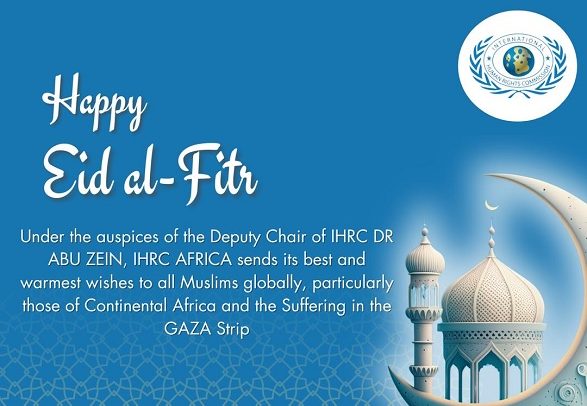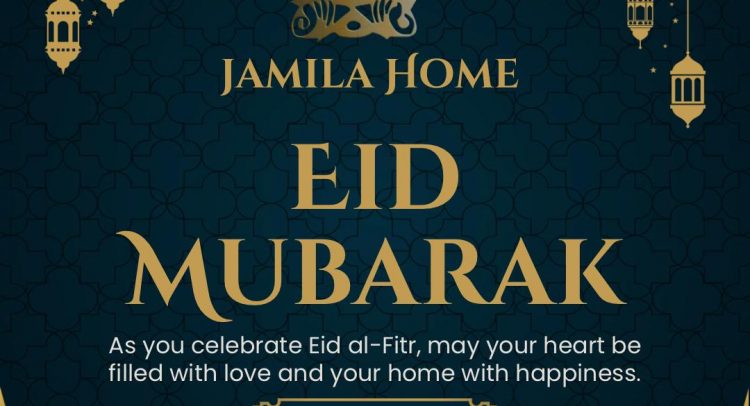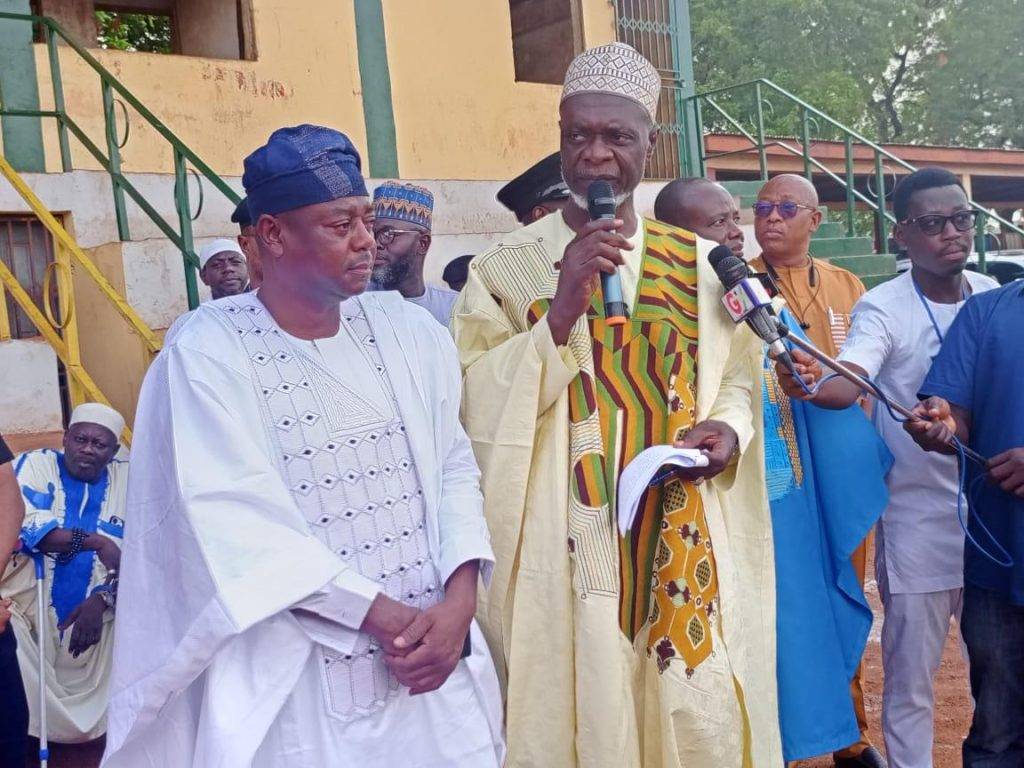
Introduction
There are many occasions in Islam in which merry-making is allowed. The two most common ones are (Eid al-Fitr) at the end of the Ramadan Fasting period and (Eid al-Adha) to climax activities of Hajj pilgrimage.
Once again we have all been blessed by Allah (SWT) to witness and celebrate this great day of Eid Al-Adha. Eid Al-Adha basically means, 'the festival of sacrifice'. On this day, Muslims are reminded about that great trial, which Prophet Ibrahim (a.s.) was put to, of sacrificing his young son Prophet Ismail (a.s.). Prophet Ibrahim (a.s.) complied with the command of Allah (SWT) and fully succeeded in it.
What is Eid al-Adha
The word "Eid" means a feast or festival and "Adha" means sacrifice. In the same light, "Udhiya", sharing same root as "Adha", refers to the sacrificial animal. Eid al-Adha therefore means Festival or feast of sacrifice.
It begins on the 10th of Dhu'l-Hijja, the last month of the Islamic calendar, and continues for an additional three days (though the Muslim use of a lunar calendar means that it may occur during any season of the year).
During the festival, families that can afford to sacrifice a ritually acceptable animal (sheep, camel, goat, or cow) do so and then share the meat among the poor, as well as friends and neighbours.
Historical background
The festival is a commemoration of the intended sacrifice of his son when Prophet Ibrahim had a revelation in a dream. He was directed in the vision to slaughter his beloved son Ismail who was born in Ibrahim's old age after a long period praying to Allah for an heir.
Prophet Ibrahim complied with the directive after seeking the consent of his obedient son Ismail who willingly gave his consent without hesitation. At the end of the story, a ram was provided as a ransom for Ismail and slaughtered in his stead. The object of sacrifice is a subject of intense polemics between Christianity and Islam. Whereas Muslims believe it was Ismail, contrarily, Christians are of the view it was Isaac. Part of the story is narrated in the Qur'an thus:
"My Lord! Give me [an heir], one of the righteous.' So We gave him the good news of a forbearing son. When he was old enough to assist in his endeavour, he said, 'My son! I see in dreams that I am sacrificing you. See what you think.' He said, 'Father! Do whatever you have been commanded. If Allah wishes, you will find me to be patient.' So when they had both surrendered to Allah's will, and he had laid him down on his forehead, We called out to him, 'O Abraham! You have indeed fulfilled your vision! Thus indeed do We reward the virtuous! This was indeed a manifest test.' Then We ransomed him with a great sacrifice." (37:100-107)
Unlike the Biblical narrative, the Qur'an presents a unique perspective in this story. Prophet Ibrahim did not hide from his beloved son Ismail the fact that he intended to carry through the instruction he received through a vision to sacrifice Ismail.
Interestingly, Ismail without blinking, gave his consent. A consent which sprung from the depth of his heart. Note also that even though Ibrahim did not succeed in sacrificing Ismail, Allah still commends him for having fulfilled his obligation.
This is to say that the objective was to elicit faith, conviction and unconditional submission to His will was the requirement. Once that had been attained, both Ibrahim and Ismail had passed the test and thus were rewarded.
Eid al-Adha sacrifice in the Qur'an and Sunnah
Commemoration of Eid al-Adha has its basis established in the Holy Qur'an. The Sunnah of the Prophet In Qur'an 2:196 Allah says:
"And complete the Hajj and Umrah for Allah. But if you are prevented, then (offer) what can be obtained with ease of sacrificial animals. And do not shave your heads until the sacrificial animal has reached its place of slaughter." (Q. 2:196)
It is an established Sunnah of the Prophet as narrated by Jabir in Sunan Abi Dawud that he used to sacrifice two rams; one for himself and members of household and the other on behalf of his followers who could not afford it.
Two dimensions of the Sacrifice
The Eid al-Adha sacrifice has two important dimensions; spiritual and social.
Spiritual
This dimension strengthens the relationship of the servant with Allah. It seeks to draw him/her nearer to the divine being as the servant submits unconditionally to Allah and obeys commands of Allah in observing the sacrifice.
The physical manifestations of our sacrifices are insignificant in the sight of Allah. The size of the animal and how beautiful it appeals to the eye is not important. Rather, what is important is the inner force (?m?n and Taqw?) that drives our actions.
In fact, Allah does not need the meat nor the blood of the animals. In other words the animals themselves are insignificant in this sacrifice. Rather, piety is what Allah expects. Allah says in Qur'an chapter 22:37: "It is not their flesh or blood that reaches Allah; rather, it is your piety that reaches Him."
Our sacrifices are therefore expected to be backed by an inner conviction of faith and God-wariness, as the driving force.
Social
This aspect of the sacrifice brings individual members of the society together and strengthens the relationship between the poor and the rich. It builds social cohesion, fellow-feeling and inculcates humanitarianism in the hearts of the people. In this regard those who are able to sacrifice are obliged to share the meat with the poor who could not. In so doing, both are able to celebrate the day and make merry together. "That they may witness the benefits for them, and mention Allah's Name during the known days over the livestock He has provided them. So eat thereof and feed the destitute and the needy." (Q. 22:28)
Characteristics of the sacrificial animal:
The animals accepted for the sacrifice are sheep, goat, camel or cattle. Generally, the animal must be healthy, must not be deformed (one eyed, broken horn etc), acquired lawfully etc. Specifically, each animal should satisfy specific age requirement: Sheep: at least 8 months, Camel: at least 5 years, Goat: 1 year or more and cattle: at least 2 years.
The meat is to be divided into three parts; one-third reserved for the owner; one-third as gift to neighbours and one-third as charity to the destitute.
Conclusion
Even though Eid al-Adha is a festival that marks an ancient historical event, it is still relevant to our contemporary times. It reminds us of the need for an absolute and unconditional submission to the will of Allah the Almighty, trusting that He has got our back. Like the "Trust Fall" game where an individual allows him/herself to fall backwards knowing that his/her safety is assured and their partner would not allow them to hit the ground.
Furthermore, Eid Al-Adha encourages humanitarianism, builds social cohesion, promotes sharing one's wealth with poor and destitute and inculcates in the believers the need to be each other's keepers. Undoubtedly, these are virtues that are needed in our contemporary world, perhaps more than any time in the past.
By Mohammed Mujib (MPhil, Study of Religions)
The writer is the Director of Religious and Cultural Affairs
Islamic University College, Ghana
Read Full Story






















Facebook
Twitter
Pinterest
Instagram
Google+
YouTube
LinkedIn
RSS